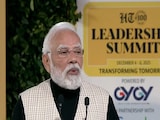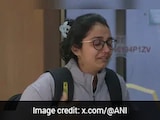Meta-owned Instagram has revealed that it is lowering the quality of older, less popular videos, leading to backlash from creators who have called the move 'disappointing'. In a video AMA (Ask Me Anything) Adam Mosseri, the head of Instagram said the platform tends to have "a bias to higher quality for creators who drive more views". The disclosure has caused concerns to small-time content creators who have been attempting to scale up their brands but feel hard done by Instagram's tactic to save its 'computational power'.
"In general, we want to show the highest-quality video we can. But if something isn't watched for a long time - because the vast majority of views are in the beginning - we will move to a lower-quality video. And then if it's watched again a lot then we'll re-render the higher quality video," explained Mosseri in the video.
"It works at an aggregate level, not an individual viewer level. We bias to higher quality for creators who drive more views. It's not a binary threshold, but rather a sliding scale," he added.
As Mosseri's statement went viral, netizens criticised the move. One user said, "It's like Instagram's way of saying, "Perform well, or else." They're really out here treating video quality like a privilege instead of a basic feature. It's wild how engagement dictates everything now", while another added: "They need to study how they ruined that app."
A third commented: "Another reason why I could care less for the app. Very disappointing to be honest."
Mosseri responded to the backlash saying that it was "the right concern". He clarified that the quality shift wasn't "huge and whether people interact with videos is based more on the content rather than the quality".
Also read | "Bet It Stinks Of Curry": Andrew Tate's Racist Remark For Diljit Dosanjh
Meta explains its position
In a blog post last year, Meta explained that it was conserving computing resources by giving fresh uploads the fastest and most basic coding.
"Processing video for video on demand (VOD) and live streaming is already compute intensive. It involves encoding large video files into more manageable formats and transcoding them to deliver to audiences." read the blog post.
"Today, demand for video content is greater than ever. And emerging use cases, such as generative AI content, mean the demands on video infrastructure are only going to intensify."
It added that once a video received sufficiently high watch time," it received a more robust encoding pass. Once it gets popular enough, Meta applies its most advanced (read: slowest, most computationally costly) processing to the video.
Instagram started as a photo-sharing platform but has quickly transformed into a TikTok-style short video platform. The platform only incentivises posting reels which has pushed creators to the fringes who preferred still images to communicate their art.















